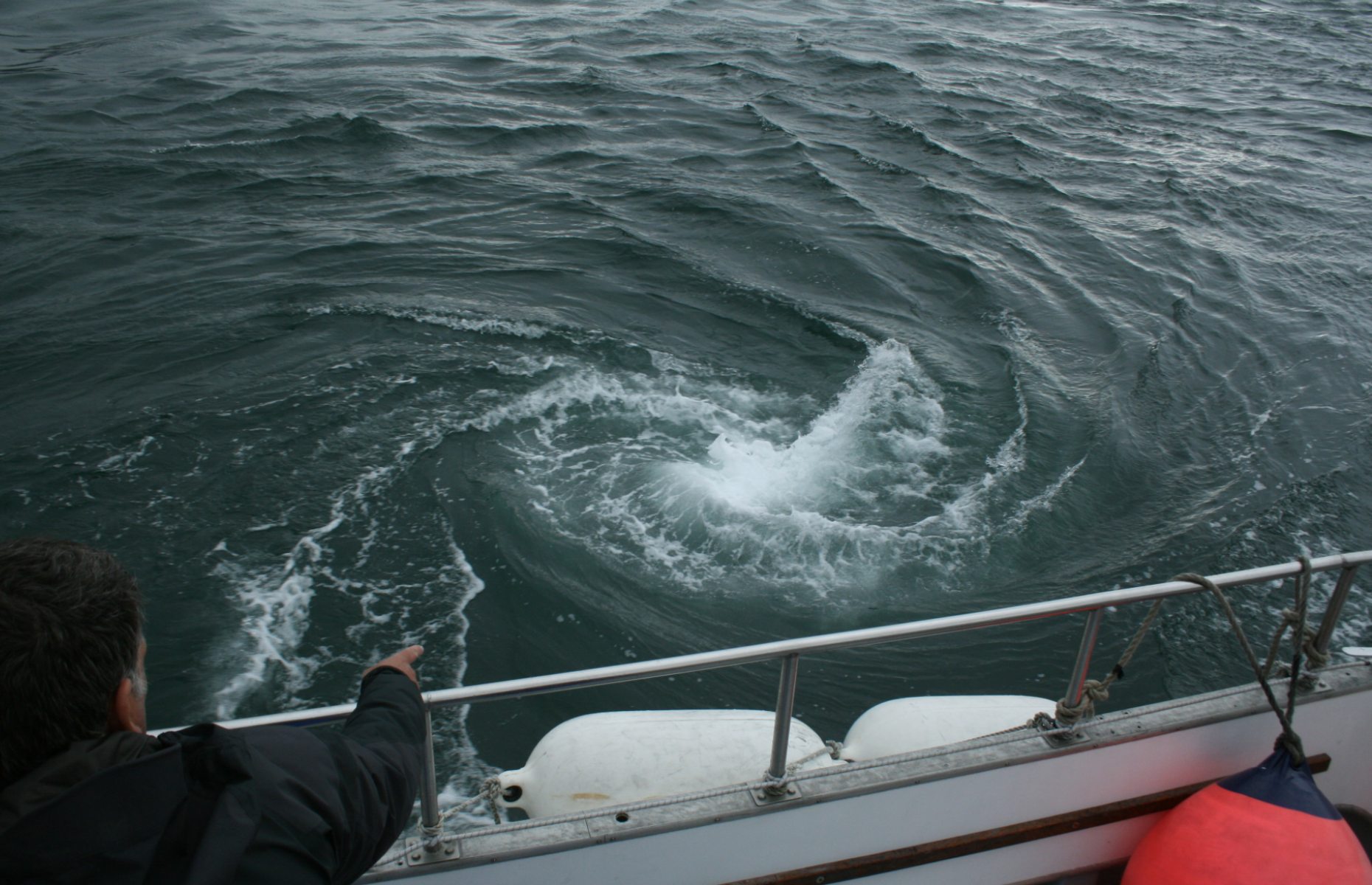Searching for sharks on Scotland’s wild west coast
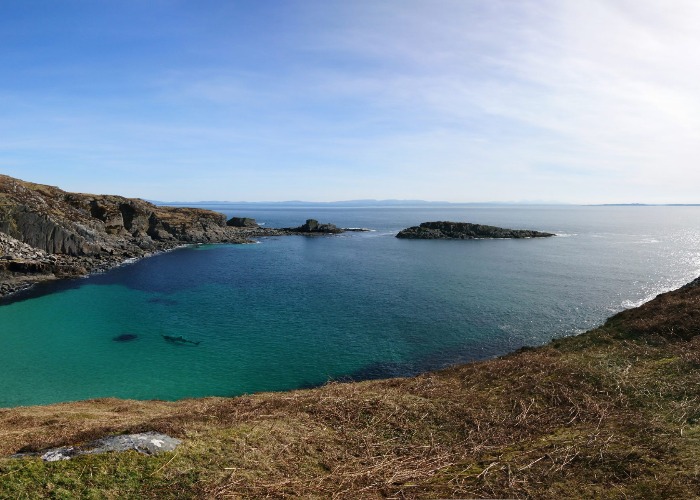
Looking for an exciting ocean adventure? You don’t need to travel to Australia or Antarctica. Argyll and the Isles of the Inner Hebrides on the west coast of Scotland offer exciting up-close encounters with whales, dolphins, sharks and more.
“It’s minke mania!”, says my guide Lois excitedly, as eight or more minke whales rise and fall around our boat, which is gently rocking, motor off, in the swell of the Atlantic Ocean. We’re surrounded by life: a feeding frenzy sparked by an invisible seafood buffet, feasted on by the whales, along with the seals and dolphins that live in the waters off Scotland’s wildly beautiful west coast. Hundreds of shearwaters bob on the swirling surface, as gannets dive bomb between, ambushing fish from above at speeds of 60 miles per hour (95km/h), and diving to 49 feet (15m), before emerging victorious to strike again.
The first afternoon of my three-day tour with Basking Shark Scotland sets the bar high, but the remainder of my time exploring the islands of the Inner Hebrides, off the coast of Argyll, rises to meet the challenge. With the pandemic meaning many of us are now choosing to holiday at home, substituting far-flung adventures for voyages of discovery on our doorstep, Scotland is finally claiming its rightful place alongside the world’s best wildlife and adventure destinations.
READ MORE: Which Scottish isle will float your boat?
Stars of the show
The marine inventory here is staggering: millions of seabirds including Atlantic puffins, black guillemots, European storm petrels, and Arctic skuas and terns; 23 species of cetaceans including humpback and minke whales, common, bottlenose and Risso’s dolphins, orcas and harbour porpoises; common and grey seals; otters; and the second-largest shark and fish in the sea: the basking shark.
Growing up to 39 feet (12m) long and weighing up to six tonnes, peak sightings of these mysterious mega sharks occur from mid-July to mid-September in the Sea of Hebrides, where they come potentially to mate and scoop up the abundant zooplankton found in the nutrient-rich waters.
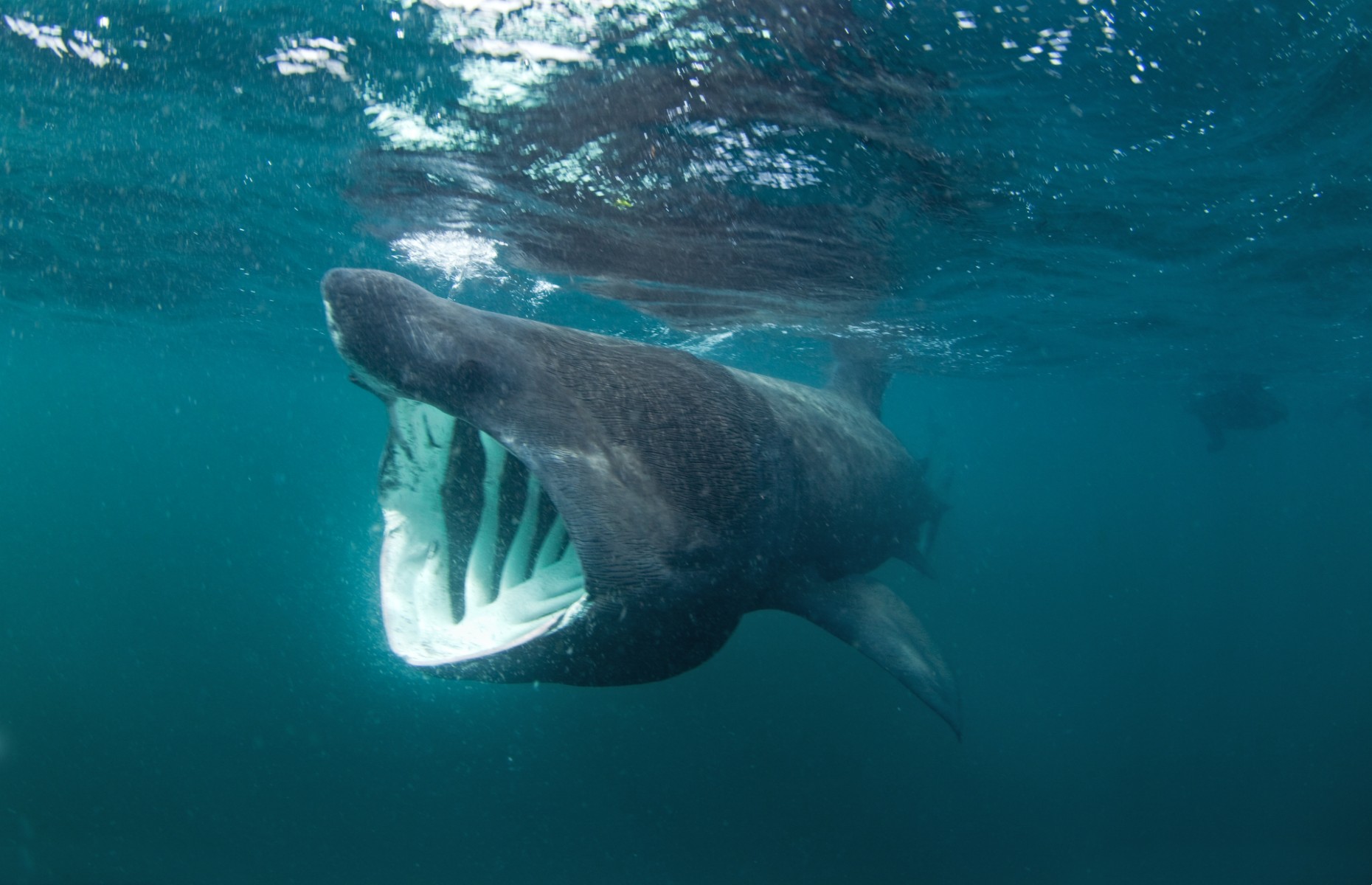 Martin Prochazkacz/Shutterstock
Martin Prochazkacz/Shutterstock
When atmospheric conditions, ocean currents and water temperatures align, these gentle leviathans can be seen cruising on the surface with their cavernous (up to three feet/1m wide) mouths agape, filtering two million gallons of water an hour through their super-sized gills. In 2020, the basking sharks rocked up on cue, but the 2021 season saw a later arrival, with scientists still researching the various factors at play.
Hunted in some regions for their fins, the sharks are now legally protected in the UK, with strict guidelines in place to ensure any encounters are responsibly managed. With Basking Shark Scotland, divers and snorkellers can enter the water with the sharks, while founder and photographer Shane Wasik, or expert guides like marine biologist Lois Flounders, are on hand to assess the conditions, keep swimmers and sharks safe, and hand out a warming mug of hot chocolate after a dip in the nippy Atlantic, where summer sea temperatures are a tingling 14°C to 16°C (57°F to 61°F).
READ MORE: The best places to see puffins in the UK and Channel Islands
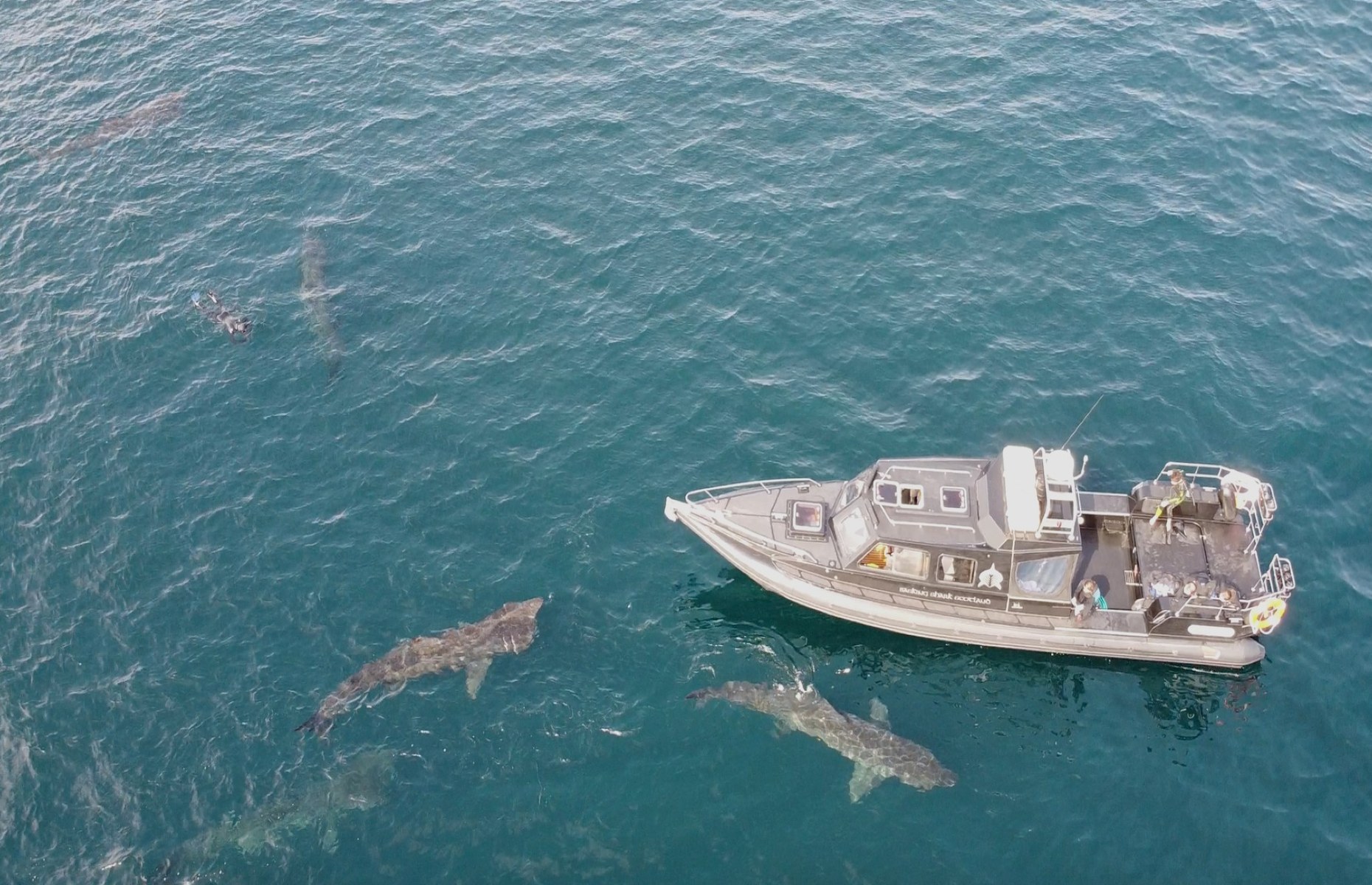 Basking Shark Scotland/Facebook
Basking Shark Scotland/Facebook
First port of Coll
After a night in the pretty west-coast harbour town of Oban, “Gateway to the Isles”, I catch one of the ferries that transport passengers between the main inhabited islands of the Hebrides. A romantic way to travel, we cruise the Sound of Mull past rugged islets, lighthouses and distant castles, watching for dolphins and whales on the two-and-a-half-hour trip to the remote Isle of Coll. One of 30 unique stops on The Hebridean Whale Trail, Coll is home to around 150 residents, and welcomes visitors to its port in mythical-sounding Arinagour with white-washed stone houses, an arch of replica fin whale bones and a welcoming party of wandering sheep.
A short walk leads to my home-from-home guest house, Tigh na Mara, and a tiny village beyond with a row of fishermen’s cottages, a general store, the Island Cafe, An Cridhe community centre and hostel, The Isle of Coll Distillery and the stylish Coll Hotel where I have dinner each night, overlooking the beautiful bay.
Just 13 miles (21km) long by three miles (5km) wide, this quiet, unassuming island punches well above its weight, with an RSPB Nature Reserve which protects the rare corncrake, 30 sandy beaches basking under lashings of sunshine by day, and some of the least light-polluted skies in Europe mesmerising stargazers by night. Designated a Dark-Sky Community in 2013 by the International Dark Sky Association, autumn and winter see the Northern Lights dance across the Hebridean heavens, with not a single street light to tarnish the view.
READ MORE: 9 reasons to visit Cumbrae, Scotland's rugged isle
Shark watch
Jumping on board Basking Shark Scotland’s boat from Coll’s small jetty, our group of seven, along with Lois and skipper Cameron Smith, spend three days cruising the island’s waters and beyond, exploring the coastline and stopping to watch dolphins, whales and seals along the way. The basking sharks elude us, but excitement runs high, as under summer’s cobalt canopy, we squeeze into buoyant 8mm-thick neoprene wetsuits, pull on hoods, boots and gloves, don fins and snorkel masks, and slip into the blue.
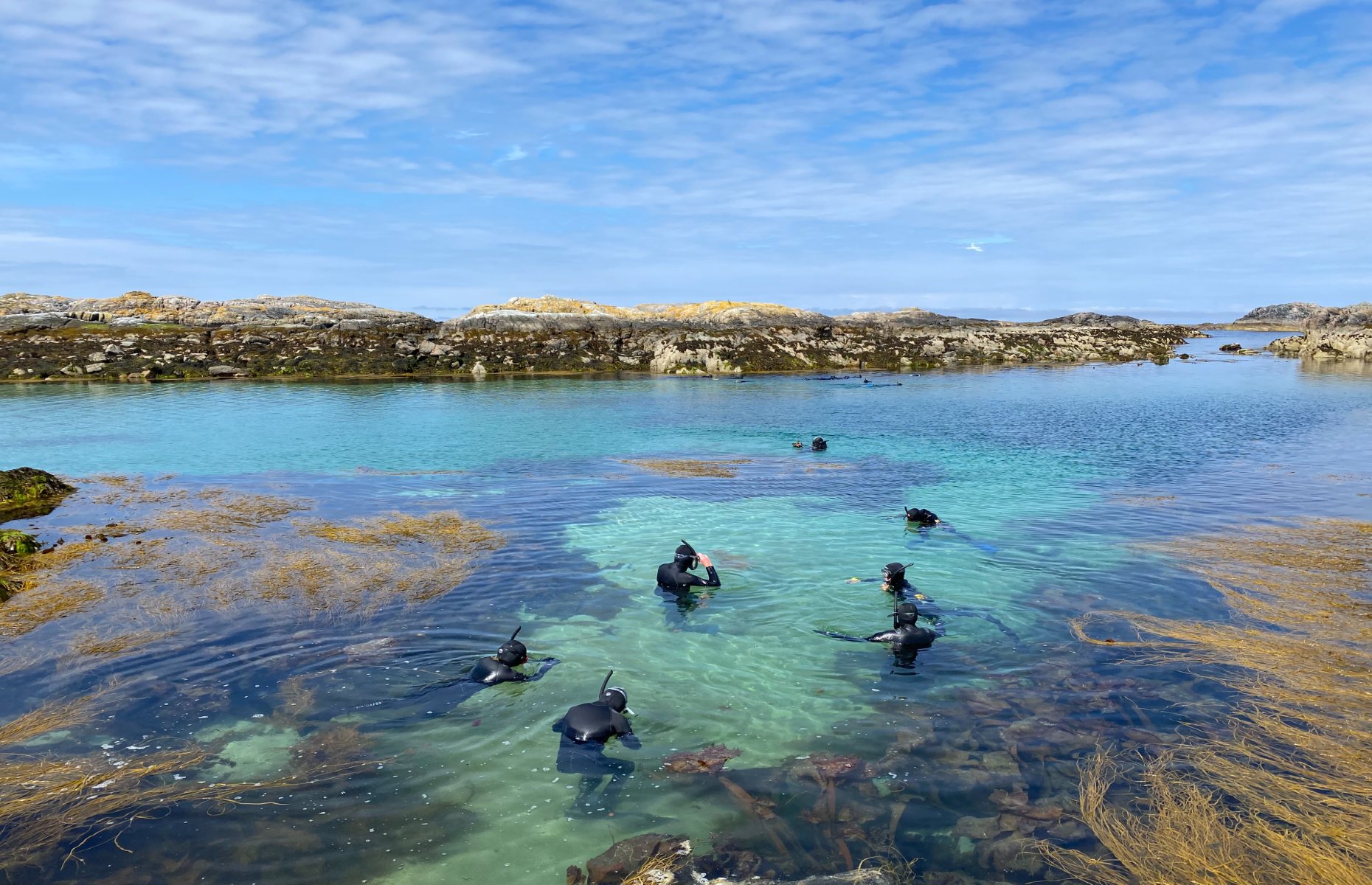 Basking Shark Scotland
Basking Shark Scotland
The Hebridean underwater world is breathtaking, and not just because of the Atlantic’s icy touch. A snorkel around the islets of the Cairns of Coll leads us through sunlit forests of golden kelp, and over sea grass beds that sway in turquoise waters, lapping softly against sparkling, white sand. For a moment, I think Cameron’s gone rogue and sailed us to the Seychelles.
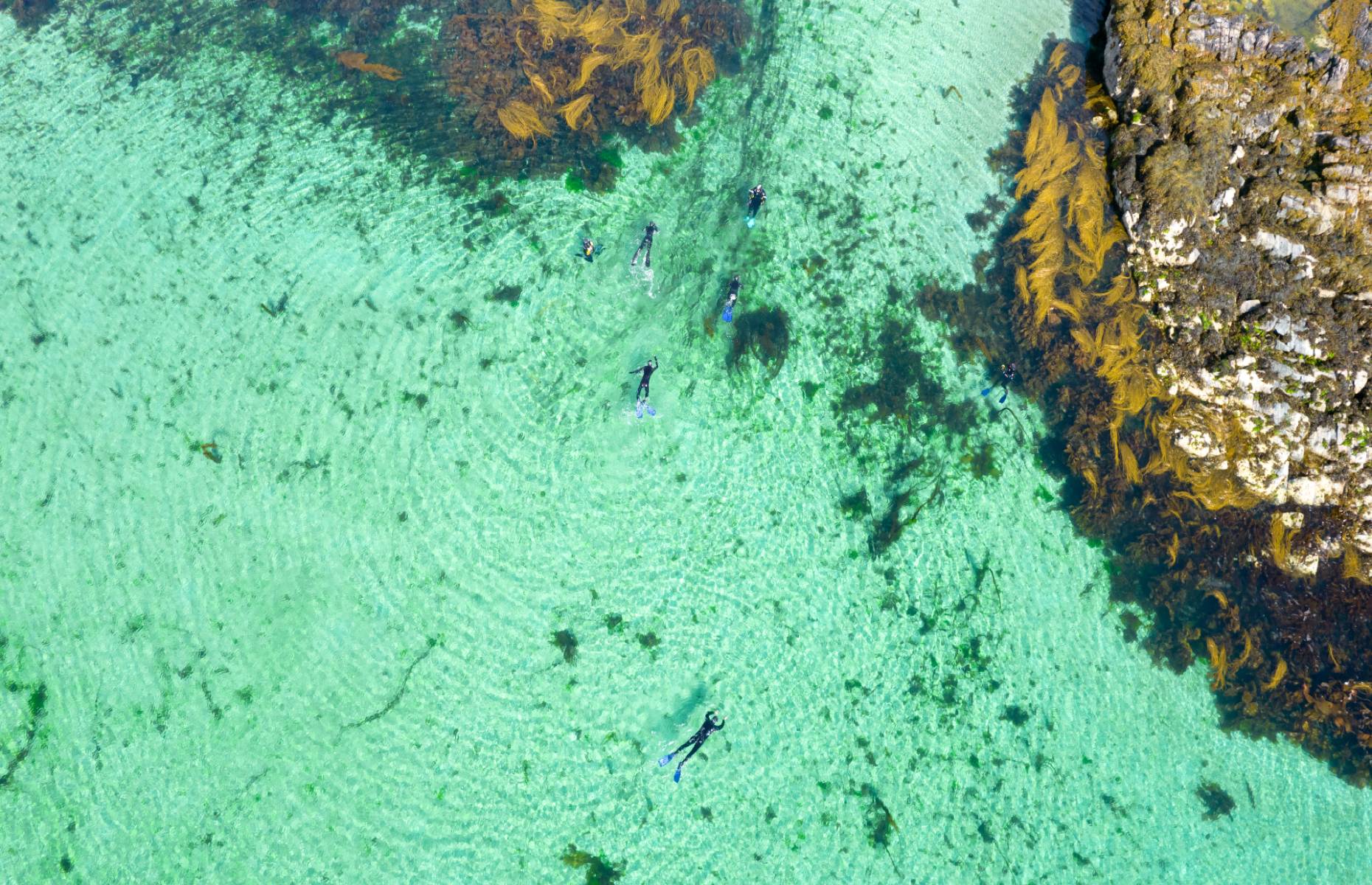 Basking Shark Scotland
Basking Shark Scotland
We search for sharks in Gunna Sound but are more than compensated with common dolphins instead, and summon the courage to snorkel inside Staffa’s imposing Fingal’s Cave: a bastion of basalt columns, rising from the waves.
Returning each day smiling and salty, I shower and rinse my wetsuit, drink tea and gaze across the bay from the garden of Tigh na Mara in the late-afternoon sun, hypnotised by the shifting Hebridean shades of sea and sky. The basking sharks will arrive the following week for others to swim with and enjoy, but for now, Coll’s gentle wind, the smell of the ocean, and memories from the deep, are all the magic I need.
READ MORE: 6 reasons to visit the Isle of Bute
5 more wild things to do in Argyll
1. Track down a beaver
Once widespread across the UK, Eurasian beavers were hunted to extinction for their fur, meat and a secretion called castoreum, which was used in medicine and perfumes. Now, 400 years later, beavers are back in Scotland.
The UK’s first ever mammal reintroduction programme brought four beaver families to Knapdale in 2009, and you can see them on a guided wildlife walk with rangers from the Argyll Beaver Centre from April to October. Hike through rare, native Atlantic rainforest, watch them swimming in the loch and see how the ‘ecosystem engineers’ have magically transformed and regenerated the region’s landscape and waterways.
 Argyll Beaver Centre
Argyll Beaver Centre
2. Take a ride around a whirlpool
Who’d have thunk the world’s third-largest whirlpool swirls in the waters off the beautiful west coast of Scotland? The Gulf of Corryvreckan is a narrow strait between the islands of Jura and Scarba, where a deep hole and basalt pinnacle on the ocean floor causes huge upwellings of waves up to 30 feet (9m) high, and raging whirlpools 164 feet (50m) across.
Skipper Sandy Campbell from Venture West skilfully navigates this churning maelstrom on daily boat trips from Crinan Harbour in the Heart of Argyll, with the chance to see dolphins, seals, minke whales and golden eagles, while cruising the rugged Garvellach Islands and surrounding Argyll Hope Spot.
3. Try your hand at seawilding
Like many regions of the world, years of harmful dredging and intensive fishing practices have degraded marine habitats along Scotland’s west coast. The community-led Seawilding programme is working to reverse this damage; planting precious seagrass meadows – which help to sequester carbon from the atmosphere and combat climate change – and restoring native oysters in Argyll’s Loch Craignish. Founder and CEO, Danny Renton, and the friendly Seawidling crew welcome visiting volunteers, including children, who can get involved with collecting and preparing seagrass seeds for future planting, and help to restore the native oyster beds.
4. Trek to Fingal’s Cave
This legendary cave that inspired The Hebrides overture by Mendelssohn soars like a sea-carved cathedral from the aquamarine waters surrounding the isle of Staffa. Turus Mara run wildlife cruises from Oban and the Isle of Mull, stopping at the wildly beautiful Lunga in the Treshnish Isles to see thousands of seabirds including puffins, guillemots and fulmars, before continuing on to explore stunning Staffa.
Here, a short hike from the landing steps leads to “Scotland’s Giant’s Causeway” and Fingal’s vast cavern, pillared with hexagonal columns of basalt, formed from ancient volcanic eruptions. A National Nature Reserve, Staffa is home to a puffin colony in summer months too.
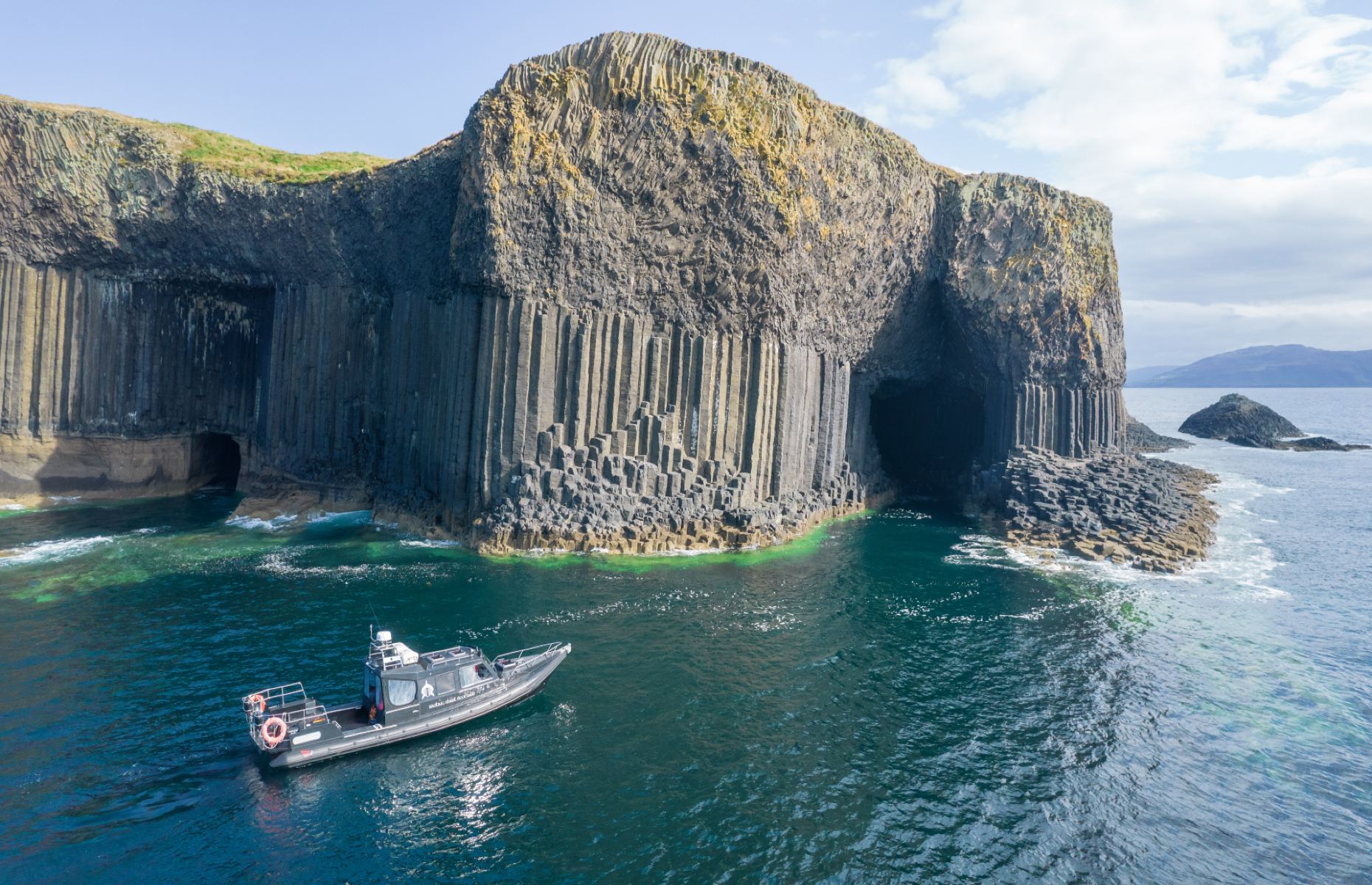 Basking Shark Scotland
Basking Shark Scotland
5. Travel by train to Oban
A spectacular three-hour train journey takes travellers from Glasgow Central to Oban, the gateway to the Hebridean Islands and main hub of the West Highlands. One of the UK’s most scenic rail journeys passes shimmering Loch Long, Ben Cruachan (the highest point in Argyll and Bute), famous Loch Lomond and the appropriately named Loch Awe, before reaching the harbour town on the west coast.
From Oban, Caledonian MacBrayne, or “CalMac”, Ferries leave from the large oceanfront terminal for the islands, while those who stay a little longer can wander historic castles, or try kayaking, diving and cycling on Scotland’s Adventure Coast.
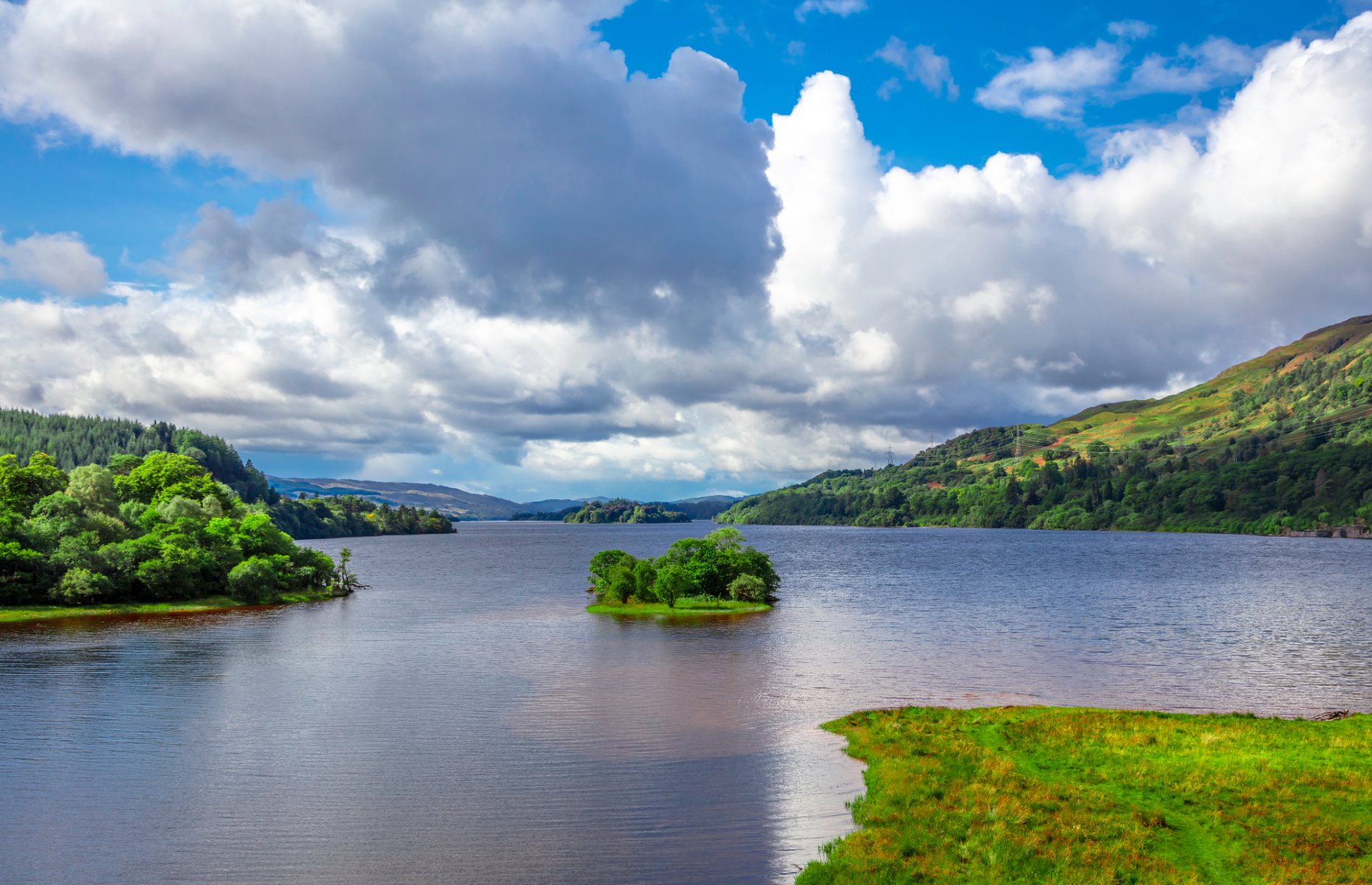 Gary Feiner/Shutterstock
Gary Feiner/Shutterstock
For more information
Basking Shark Scotland offers eco-conscious wildlife adventure tours in the Hebridean Islands and beyond from £80 per person.
The 4-star guest house on Coll, Tigh na Mara, has views of the Isle of Mull and the Treshnish Isles, and rooms from £160 for two nights, bed & breakfast.
Overlooking the harbour in Oban, the Perle Oban Hotel & Spa is close to the train station and ferry, and has rooms and suites from £139 per night (room only) or £169 per night (including breakfast).
Avanti West Coast offers a range of train travel options between London and Glasgow.
For more information on visiting Scotland responsibly, go to VisitScotland.com, and to plan your trip to Argyll and the Inner Hebrides, visit WildAboutArgyll.co.uk.
Lead image: ObanWebDesign/Shutterstock
Comments
Be the first to comment
Do you want to comment on this article? You need to be signed in for this feature
